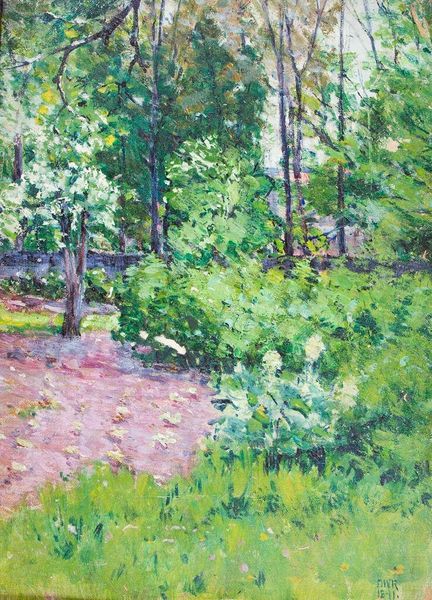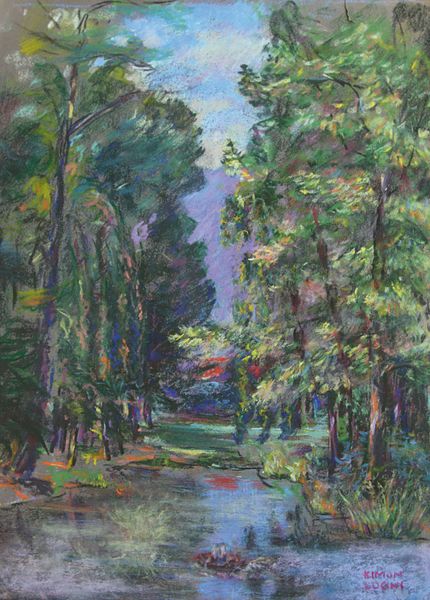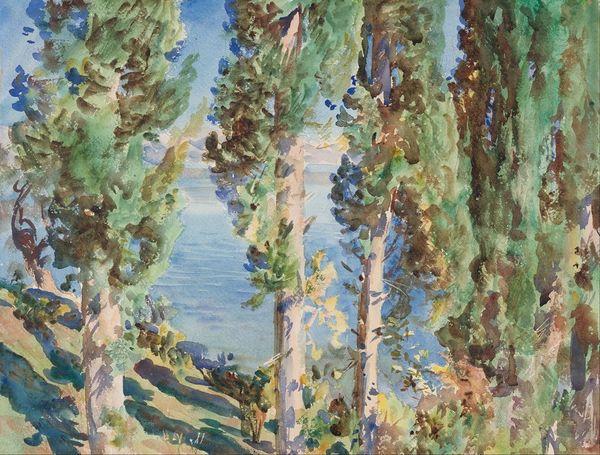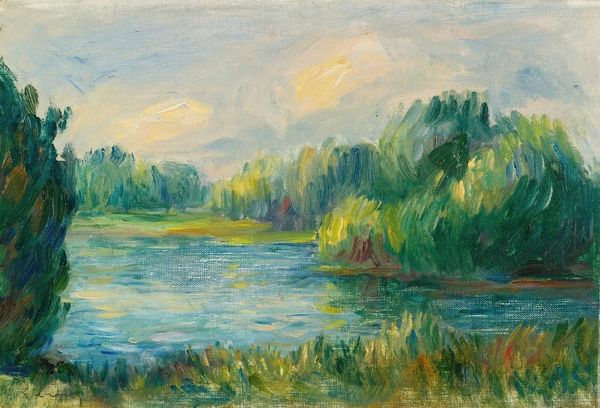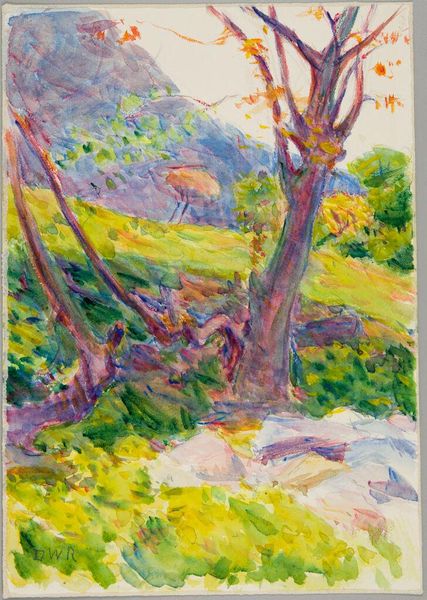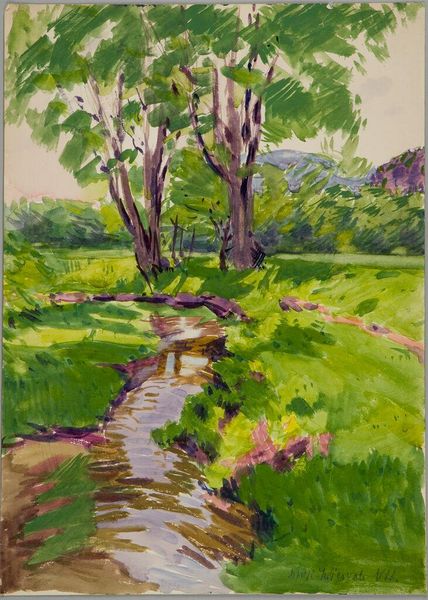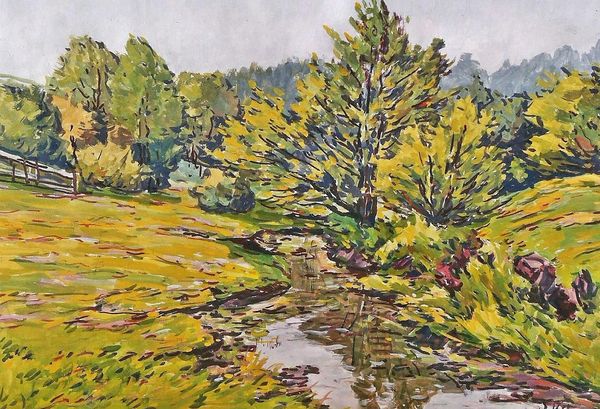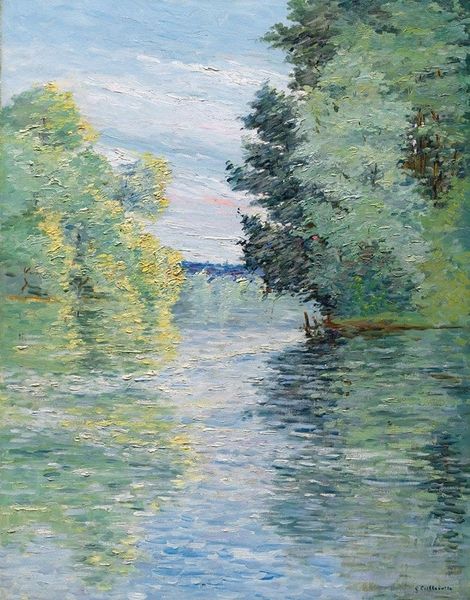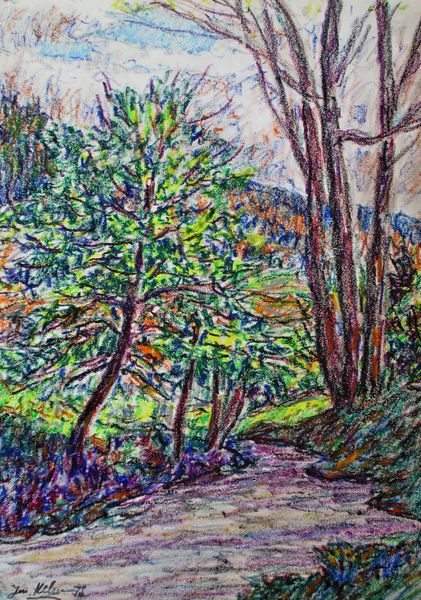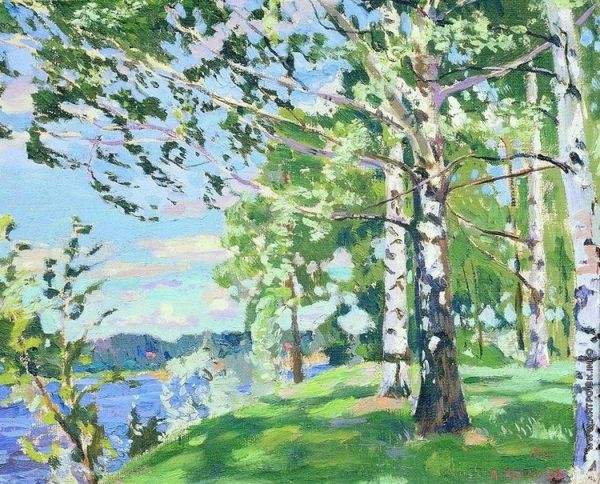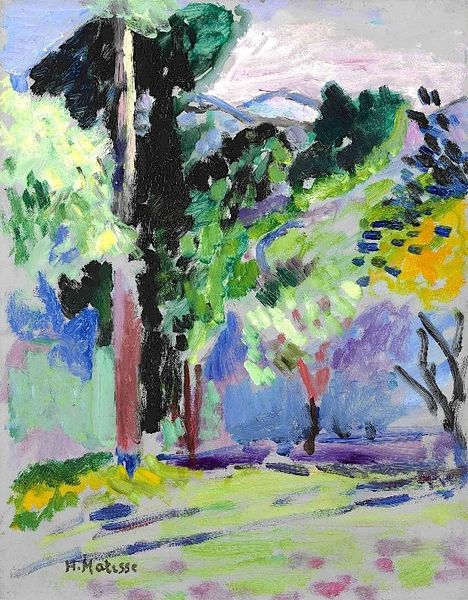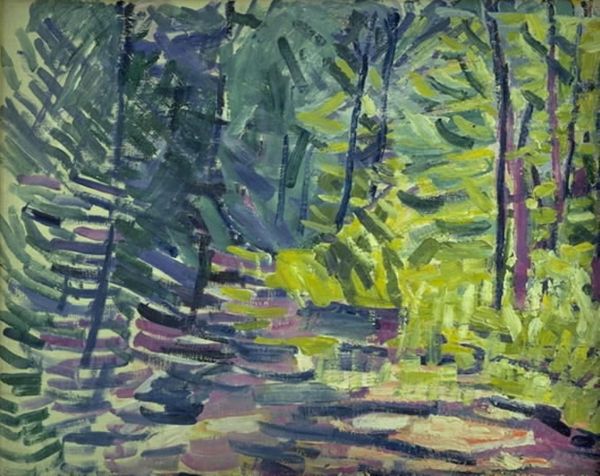
Dimensions: 18 5/8 x 24 7/8 in. (47.31 x 63.18 cm) (sight)
Copyright: No Copyright - United States
Curator: This watercolor on paper by Armand Guillaumin, dating from 1917, is titled "The Valley of the Sedelle," a scene captured en plein air. Editor: My immediate impression is one of serenity and gentle movement. The soft, pastel colors create a dreamy atmosphere, almost as if the scene is a memory fading at the edges. Curator: It’s fascinating how Guillaumin’s style straddles the line between Impressionism and something more grounded. While the brushstrokes are loose, there's a clear attempt to depict the specific character of this French landscape. There's a history of landscape painting tied to French national identity being expressed in the work. Editor: I agree, and that’s evident in the use of color. Green predominates, but he employs lilacs, soft blues, and ochre accents. Looking closer, I sense something else at play. Water holds immense symbolic power across cultures: representing purification, renewal, the unconscious… Here, with the arched bridge mirrored in the flowing river, is the artist hinting at a journey, a transition? Curator: Possibly. During the First World War, landscape paintings became a poignant reminder of the beauty and peace that was being threatened, a sentimental token to fuel nationalistic sentiment and the yearning for home among soldiers. Considering Guillaumin painted this during wartime, such subtle symbolism would resonate deeply. The imagery and sentiment are intertwined, a comforting idealized vision of France to reassure. Editor: Absolutely. And think about how the act of painting "en plein air" itself becomes charged in this context. Guillaumin is not merely representing nature, but actively participating in it, preserving it. In this work, the river meanders off the scene in an open gesture; inviting us to project our own memories onto it. Curator: Indeed, this piece functions not just as a depiction but also as a social object with great contextual import. Editor: It's amazing how such delicate watercolors can carry such symbolic weight, reminding us of the potent intersection of landscape, memory, and hope. Curator: Precisely. Through "The Valley of the Sedelle" Guillaumin speaks to the enduring strength found in even the simplest landscape motifs, reflecting their value beyond mere representation.
Comments
minneapolisinstituteofart about 2 years ago
⋮
Armand Guillaumin, a first-generation Impressionist, liked working at dawn, often stopping at 8 a.m. to avoid the sun. This routine became easier in 1891, when he won the lottery and quit his job with the Paris-Orléans railway. His unlabored approach to this pastel, allowing the textured paper to show through, helps approximate the early-morning light. Guillaumin’s love of color translated into dashes of violet, salmon, and purple on the tree trunks, and cobalt and periwinkle on the water. The Sédelle River was near his home in Crozant, near Limoges, France.
Join the conversation
Join millions of artists and users on Artera today and experience the ultimate creative platform.
